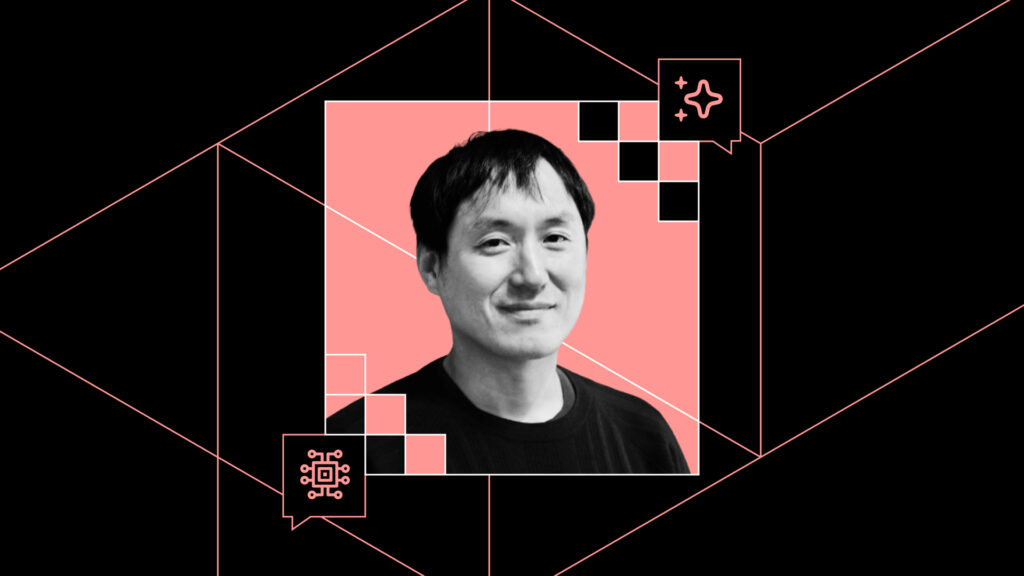Advancing the future of the internet with new ways of defining our shared digital realities
 Yoshiki Ohshima is the chief scientist and co-founder of Croquet, an organization building foundational technologies for future generations of communication and collaboration technologies.
Yoshiki Ohshima is the chief scientist and co-founder of Croquet, an organization building foundational technologies for future generations of communication and collaboration technologies. More than ever, we need a movement to ensure the internet remains a force for good. The Mozilla Internet Ecosystem (MIECO) program fuels this movement by supporting people who are looking to advance a more human-centered internet. This week we're highlighting Yoshiki Ohshima, a computer scientist and researcher with big ideas for how to shift the way that we think about building virtual worlds.
Software has always had the ability to shape the world around us, but the advent of spatial computing - brought about by the internet of things (IOT), virtual and augmented reality (VR/AR), and access to cloud computing technologies - is making those world-changing capabilities a little more literal. The growth of the immersive web" brings new capabilities to the internet that allow us to interact with information, and each other, in new interactive ways - in some cases bringing us into entirely new worlds that are impossible to experience in our physical world. With such powerful new capabilities comes a need for new ways to build these experiences, and Yoshiki Ohshima has spent years thinking about new programming paradigms.
Yoshiki, who began his career at Walt Disney Imagineering, is now the chief scientist and co-founder of Croquet, an organization building foundational technologies for future generations of communication and collaboration tools. With over two decades of experience working at the forefront of collaborative technologies, Yoshiki has been helping realize the promise of technology to help us create and connect with others from the very beginning.
Yoshiki's work at Croquet focuses on real time synchronization applications that are designed to offer new ways of collaborating. Greenlight, which combines the functionality of whiteboards and screen shares with video and voice chat, provides a shared workspace for group communication and brainstorming. Croquet Microverse is another app that offers new ways to share information with multi-user virtual worlds.
While 3D virtual worlds aren't new, advancements in computer graphics have led to their growing popularity in the past several years. Through his work in MIECO, Yoshiki is hoping to expand access to tools that help people shape the virtual environments around themselves in natural, intuitive ways.
The unique feature of Croquet Microverse is that it allows developers and designers to work together in real time to create and improve contents in the live manner from within the 3D environment - and one can do this for complex programs, not just a small subset of features," Yoshiki says.
Creating new ways to define behaviors in software beyond text-based programming languages is something that Yoshiki has been working on for years. By introducing visual, block-based programming into 3D environments, he sees an opportunity to improve our collaborative capabilities for co-creating virtual worlds.
Today, virtual worlds are being adopted for a wide range of use cases, which is being made possible by innovations and shifts in the way that we think about programming worlds. It is now easier than ever to build immersive educational experiences to explore the inside of the brain, or embed presentations and informational content into a shared world accessible from the browser. Croquet, which offers synchronization and simulation technology to make multi-user applications easier to build, is an ideal testing ground for 3D programming.
Within these 3D worlds that Croquet offers, Yoshiki explains that his vision of collaborative, block-based programming would offer visitors capabilities that allow them to modify the digital world that they're inhabiting. Croquet's underlying reflector" system enables perfectly synchronized simulations for everyone in the environment, which means that a change one person makes will be immediately seen by others. These capabilities, which build on top of principles found in other visual programming projects that Yoshiki has influenced, such as GP Blocks, open up the field of interactive programming for virtual worlds to a wider audience.
As the field of programming continues to evolve, Yoshiki sees a future that bridges between different skill sets to help people build together more collaboratively.
We are well-positioned to create a generally powerful, yet easy to use programming environment," Yoshiki says.An object created in one Croquet Microverse world is fully transportable to another world, and we hope to standardize the format for wider adoption by other platforms as well."
The post Advancing the future of the internet with new ways of defining our shared digital realities appeared first on The Mozilla Blog.